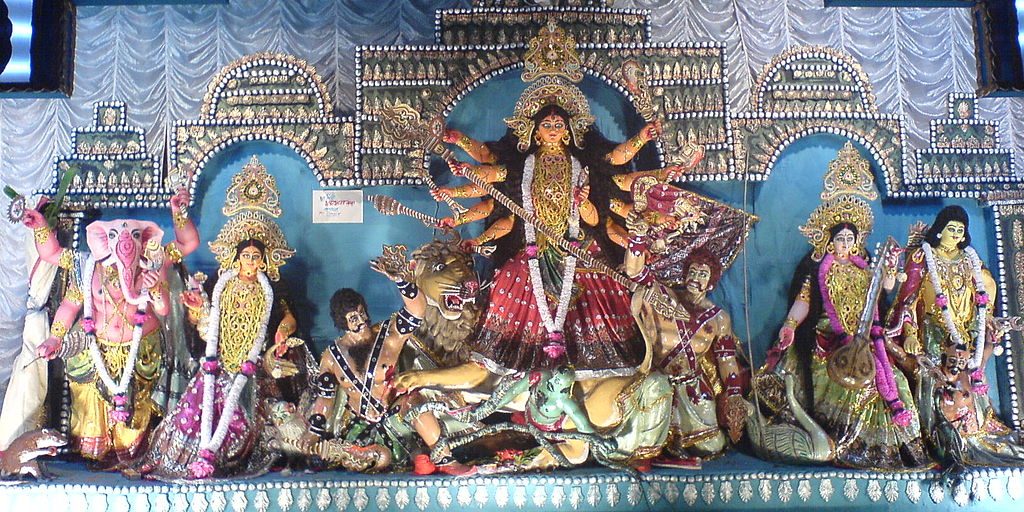

Shubh Navratri
Navrati is a hindu festival that lasts upto nine days (and ten days) and is celebrated every year in the autumn. It is observed for different reasons and celebrated differently in various parts of the Indian cultural sphere.
Theoretically, there are four seasonal Navaratri. It is practice in, the post-monsoon autumn festival called Sharada Navaratri that is the most observed in the honor of the divine feminine Devi (Durga). The festival is celebrated in the bright half of the Hindu calendar month Ashvin, which typically falls in the months of September and October.
The celebrations vary by region, leaving much to the creativity and preferences of the Hindu.
Sharada Navaratri: the most celebrated of the four Navaratri, named after Sharada which means autumn. It is observed the lunar month of Ashvin (post-monsoon, September–October). In many regions, the festival falls after the autumn harvest, and in others during harvest.[15] Vasanta Navaratri: the second most celebrated, named after vasanta which means spring. It is observed the lunar month of Chaitra (post-winter, March–April). In many regions the festival falls after spring harvest, and in others
Day 1 – Shailaputri
Known as Pratipada, this day is associated with Shailaputri (literally “Daughter of Mountain”), an incarnation of Parvati. It is in this form that the Goddess is worshiped as the consort of Shiva; she is depicted as riding the bull, Nandi, with a trishula in her right hand and lotus in her left. Shailaputri is considered to be the direct incarnation of Mahakali. The color of the day is grey, which depicts action and vigor.[29]
Day 2 – Brahmacharini
On Dwitiya, Goddess Brahmacharini, another incarnation of Parvati, is worshiped. In this form, Parvati became Sati, her unmarried self. Brahmacharini is worshiped for emancipation or moksha and endowment of peace and prosperity. Depicted as walking bare feet and holding a japamala and kamandal in her hands, she symbolizes bliss and calm. Blue is the color code of this day. Orange color depicts tranquility yet strong energy.
Day 3 – Chandraghanta
Tritiya commemorates the worship of Chandraghanta – the name derived from the fact that after marrying Shiva, Parvati adorned her forehead with the ardhachandra (lit. half-moon). She is the embodiment of beauty and is also symbolic of bravery. White is the color of the third day, which is a vivacious color and can pep up everyone’s mood.
Day 4 – Kushmanda
Goddess Kushmanda is worshiped on Chaturthi. Believed to be the creative power of the universe, Kushmanda associated with the endowment of vegetation on earth and hence, the color of the day is Red. She is depicted as having eight arms and sits on a Tiger.
Day 5 – Skandamata
Skandamata, the goddess worshiped on Panchami, is the mother of Skanda (or Kartikeya). The color of Royal blue is symbolic of the transforming strength of a mother when her child is confronted with danger. She is depicted riding a ferocious lion, having four arms and holding her baby.
Day 6 – Katyayani
Born to sage Katyayana, she is an incarnation of Durga and is shown to exhibit courage which is symbolized by the color Yellow. Known as the warrior goddess, she is considered one of the most violent forms of Devi. In this avatar, Kātyāyanī rides a lion and has four hands. She is a form of Parvati, Mahalakshmi,Mahasaraswati.
Day 7 – Kalaratri
Considered the most ferocious form of Goddess Durga, Kalaratri is revered on Saptami. It is believed that Parvati removed her fair skin to kill the demons Sumbha and Nisumbha. The color of the day is Green. On Saptami, the Goddess appears in a white color attire with a lot of rage in her fiery eyes, her skin turns black. The white color portrays prayer and peace and ensures the devotees that the Goddess will protect them from harm.
Day 8 – Mahagauri
Mahagauri symbolizes intelligence and peace. The color associated with this day is Peakcock Green which depicts optimism.
Day 9 – Sidhidatri
On the last day of the festival also known as Navami, people pray to Siddhidhatri. Sitting on a lotus, she is believed to possess and bestows all types of Siddhis. Here she has four hands. Also known as SriLakshmi Devi. The purple color of the day portrays an admiration towards nature’s beauty.Sidhidatri is Parvati, the wife of Lord Shiva. Siddhidhatri is also seen as the Ardhanarishvara form of Shiva Shakti.It is believed that one side of Lord Shiva’s body is that of Goddess Siddhidatri. Therefore, he is also known by the name of Ardhanarishwar. According to Vedic scriptures, Lord Shiva attained all the siddhis by worshiping this Goddess.
0 (Please login to give a Curious Clap to your friend.)
SignUp to Participate Now! Win Certifiates and Prizes.

Login/Signup